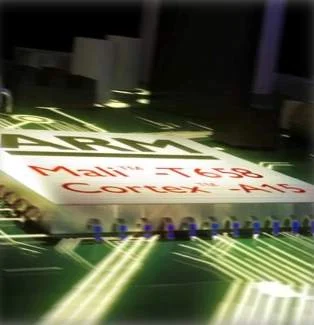ARM has debuted the Mali-T658 Graphics Processing Unit (GPU), the latest addition to its Midgard architecture-based GPU family.
The next-gen GPU – which is scalable to 8 cores – delivers up to 10x the graphics performance of the Mali-400 MP and boasts 4x the GPU compute performance of the Mali-T604 GPU.

ARM spokesperson Ian Smythe told TG Daily the next-gen GPU was targeted at devices such as superphones, tablets and smart-TVs.
“High performance GPUs are a key part of the compute system for future devices. Our goal is to reproduce the feel of an HD experience across multiple screens, all while maintaining energy efficiency. Remember, visual computing is increasingly about designing the best compute systems to match the competing demands of power and performance,” Smythe explained.
“As such, we integrate CPU, GPU and interconnect technology into optimized, coherent systems – significantly improving performance and facilitating more efficient data sharing. Plus, the common set of compatible drivers for all Midgard architecture-based Mali GPUs enables faster time-to-market and minimizes software upgrade costs for future implementations.”
Indeed, the Mali-T658 has been designed to work seamlessly with the ARM Cortex-A15 and Cortex-A7 processors – either in standalone modes or in big.LITTLE processing mode.
“The autonomous nature of the Mali Job Manager, and its ability to carry on graphics processing with a reduced load on the CPU, means it is very well suited to work alongside a big.LITTLE CPU system.
“By using the right processor for the appropriate task, the Mali-T658 is able to handle GPU compute tasks in parallel with the CPU handling the always-on always-connected tasks,” Smythe added.
Unsurprisingly, the MALI-T658 GPU has already won accolades from a number of industry heavyweights, including graphics guru Jon Peddie.
“Following the recent introduction of big.LITTLE processing and the ARMv8 architecture, the launch of Mali-T658 is [yet] another example of how ARM is seeking to redefine heterogeneous computing for the embedded space,” said Peddie.
“This will provide high-performance graphics and compute systems for low-power applications.”






